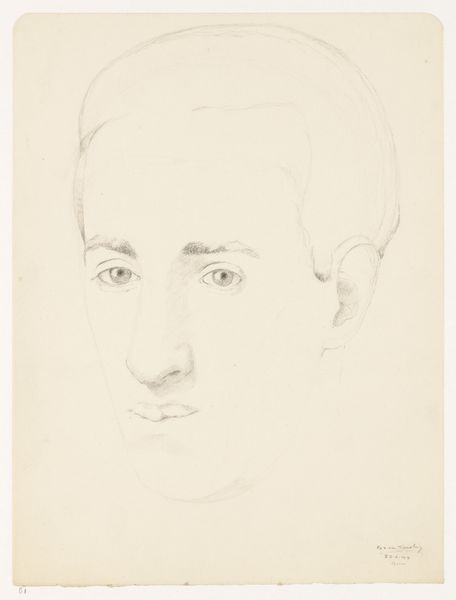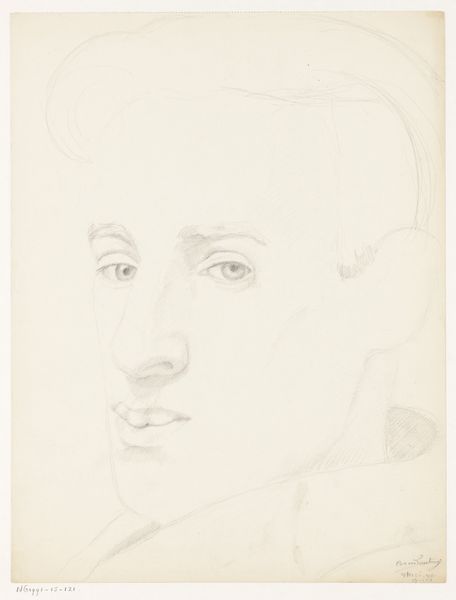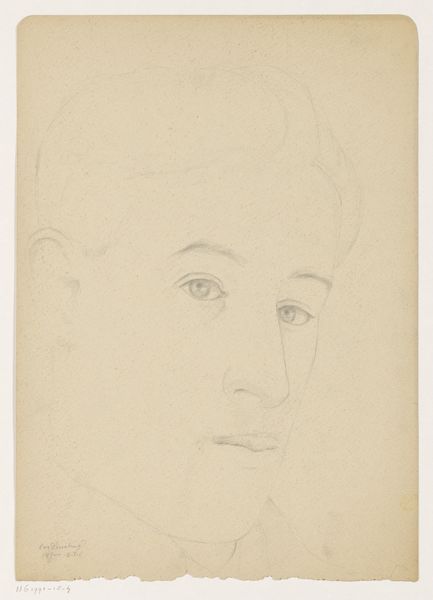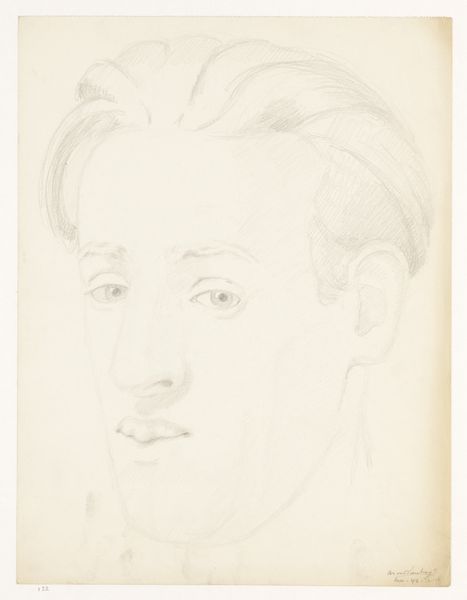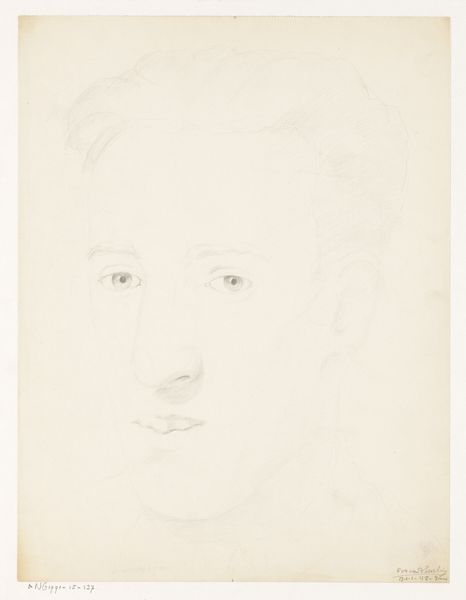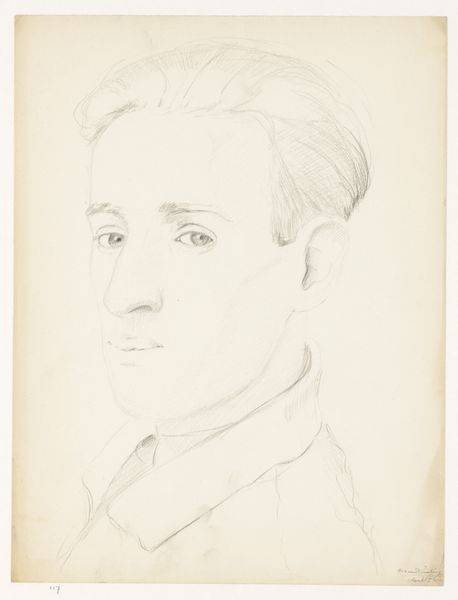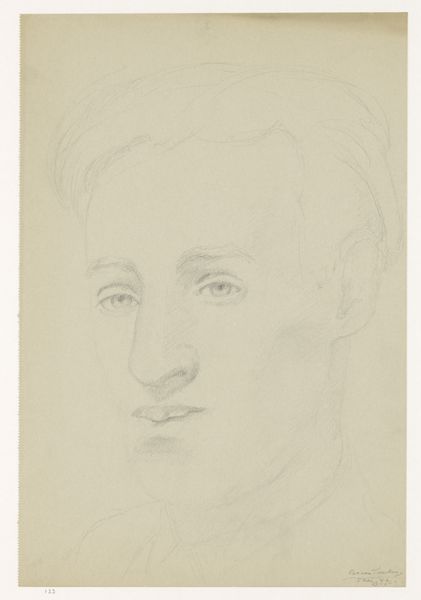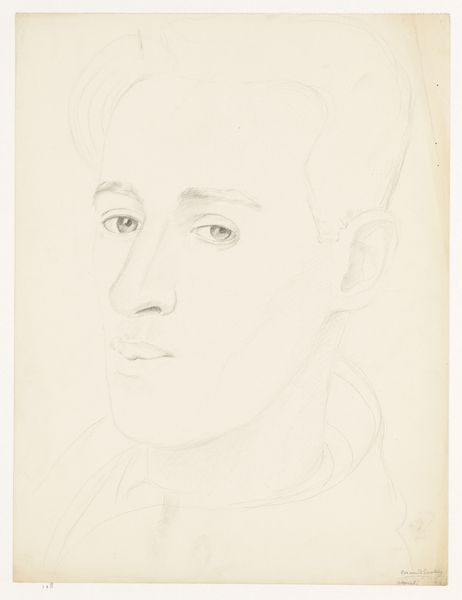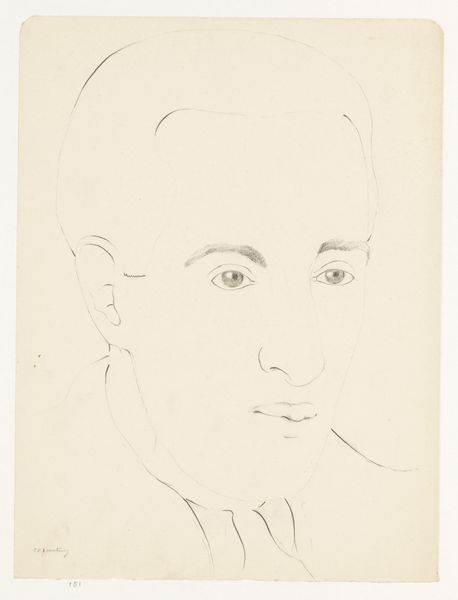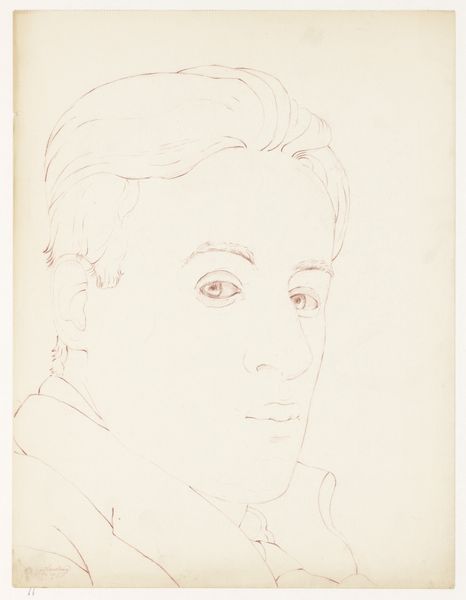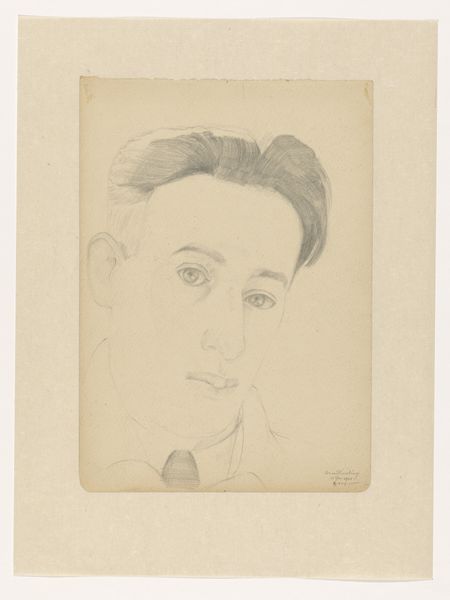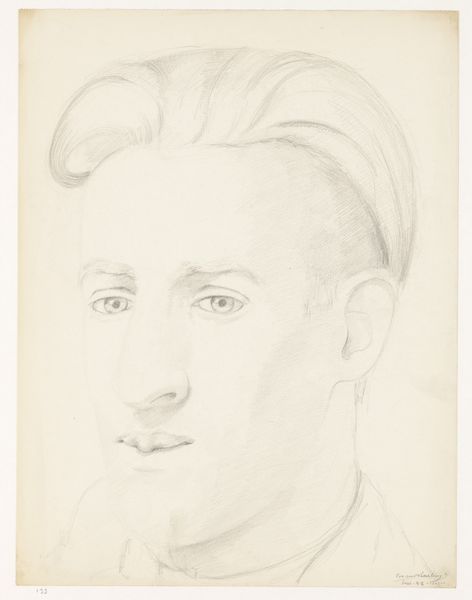
drawing, paper, pencil, graphite
#
portrait
#
drawing
#
self-portrait
#
paper
#
form
#
pencil drawing
#
pencil
#
abstraction
#
line
#
graphite
#
portrait drawing
#
modernism
Dimensions: height 35.5 cm, width 27.0 cm
Copyright: Rijks Museum: Open Domain
Editor: Here we have Cor van Teeseling’s "Self-portrait: B-1-1," created sometime between 1941 and 1948. It's a pencil drawing on paper, currently held at the Rijksmuseum. It has a delicate feel. There is something haunting in his gaze. What historical context can we use to better understand this work? Curator: Given the period this self-portrait was possibly created, between 1941 and 1948, during and directly after the Second World War, the ghostly lightness may connect with the artist’s socio-political environment. Consider how many artists were grappling with questions of identity and representation amidst wartime anxieties. This piece reflects that struggle and raises questions about the function of self-portraiture in such times. How do you think the medium—pencil on paper—contributes to its message? Editor: The fragile lines really do amplify the sense of vulnerability, but I still wonder how this piece interacts with institutional power structures? Was van Teeseling intentionally making a political statement through art, or could it have simply been a private work? Curator: That's a good question. Think about the art world then. Did artists have freedom of expression during that time? What role did galleries and museums play in displaying or suppressing certain artistic voices? Also, we may ask whether his choice of abstraction reflects a desire to disguise and encode himself? Remember, portraiture itself can be a site of power dynamics. The very act of displaying oneself is loaded. What do you make of his style relating to other portraiture styles of the time? Editor: It's a good reminder of how even subtle artistic decisions might mirror or even contest broader political and social themes. I am more convinced it is not accidental. Curator: Indeed. Analyzing an artwork isn't only about what we see on the surface. We need to consider how its production, reception, and historical framework mutually shape one another.
Comments
No comments
Be the first to comment and join the conversation on the ultimate creative platform.
